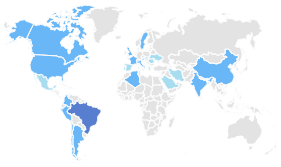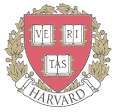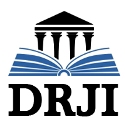Meteorological Macro-Imagineering: A Re-plumbed Freshwater Supply System for the USA’s Southwest? (Macro-Imagenharia Meteorológica: Um Sistema de Abastecimento de Água Doce para o Sudoeste dos EUA?)
Resumo
The macroproject proposed, encompassing the arid Southwest of the USA and northern Mexico, has the potential to more than pay for itself. If a radical volumetric enlargement were competently completed by correctly educated advocates of Macro-Imagineering, supplemented by geothermal power-plants, it could make benign an over-polluted aquatic “monster” — the present-day stagnant and putrid Salton Sea — through induced importation of diluting Gulf of California saltwater resulting in rapid areal increase of the inanimate “creature”, converting it from its presently degraded smelly status to an amply beneficial condition as an anthropogenic extension of Mexico’s Gulf of California! Formation by Macro-Engineering means of a sustainable human development around and thereon can result in profitable voluminous desalinated seawater exportation from the State ofCaliforniato adjacentArizona,Nevadaand nearbyUtahas well asMexicobordering theUSA’s Southwest. The key infrastructure permitting these developments is a centralized multi-segment photovoltaic-powered desalination factory resting atop named Introduction floating artificial islands covering most of a deliberately enlarged and robotized Salton Sea. A particular macroproject proposed, the Southwest Water Alliance Project (SWAP), is fashioned somewhat after NEOM, an announced ecopolis, but still structurally unspecified robot megacity, scheduled to be built in northern Saudi Arabia connected by a yet-to-be-constructed fixed sea-strait crossing linking Tabuk, Saudi Arabia to Sharm el-Sheikh on the Sinai Peninsula of bordering Egypt.
Key words: Seawater desalination, floating photovoltaic platforms, arid Southwest USA and Mexico development, Macro-Imagineering, Macro-Engineering.
===========================================================================O macroprojeto proposto, abrangendo o árido sudoeste dos EUA e norte do México, tem potencial para mais do que pagar por si mesmo. Se um aumento volumétrico radical fosse conduzido por defensores competentes da Macro-Imagineering, suplementado por usinas de energia geotérmica, seria possível tornar benigno um "monstro" aquático extremamente poluído — o atual e estagnado Mar de Salton — por meio de importações induzidas de água salgada diluente do Golfo da Califórnia, resultando em um rápido aumento de área da "criatura" inanimada, resgatando-a de seu estado atual degradado como uma extensão antropogênica do Golfo da Califórnia! Por meio da Macroengenharia é possível conduzir um desenvolvimento humano sustentável e lucrativo capaz de garantir uma expressiva exportação de água do mar dessalinizada do estado da Califórnia para os adjacentes Arizona, Nevada e Utah, além do México na fronteira com o sudoeste dos EUA. A principal infraestrutura que permite esse desenvolvimento é uma fábrica centralizada para dessalinização multissegmento baseada em energia fotovoltaica, formada por ilhas artificiais flutuantes que cobririam a maior parte do Mar de Salton em um sistema ampliado e robotizado. Em particular, um macroprojeto semelhante proposto é o Southwest Water Alliance Project (SWAP) — criado um pouco depois do NEOM —, uma ecópolis anunciada, megacidade robótica estruturalmente ainda não especificada, programada para ser construída no norte da Arábia Saudita, conectada por uma passagem estreita ligando Tabuk, na Arábia Saudita, a Sharm el-Sheikh, na Península do Sinai (fronteira com o Egito).
Palavras-chave: Dessalinização da água do mar, plataformas fotovoltaicas flutuantes, desenvolvimento do sudoeste dos EUA e do México, Macroengenharia.
Texto completo:
PDFReferências
Levari, D.E. et al. 29 June 2018. “Prevalence-induced concept change in human judgment” Science 360: 1465-1467.
Frie, A.L. et al. 2017. “The Effect of a Receding Saline Lake (The Salton Sea) on Airborne Particulate Matter Composition” Environmental Science & Technology 51: 8263-8292.
Hudson, M. 24 July 2018. “Ending technocracy with a neologism? Avivocracy as a conceptual tool” Technology in Society 55: 138.
Cathcart, R.B. 2017 Magical Macro-Imagineering: Atlantropa and Beyond Mega-projects. Infinity Publishing. Page 149.
GOTO: tolkiengateway.net/wiki/Eucatastrophe.
Cathcart, R.B. 2013. “Macro-Imagineering a ‘Fifth Coast’ USA: Salton Sea Megaport and Seawater Canal” Chapter 4, pages 140-141 IN White, M. R. (Ed.) Seawater. Nova Science Publishers.
McDonald, J.E. May 1962. “The evaporation-precipitation fallacy” Weather Royal Meteorological Society17: 168-177.
Santos, A. et al. August 2018. “Artificial lakes as climate change adaptation strategy in drylands: evaluating the trade-off on non-target ecosystem services” Mitigation and Adaptation Strategies for Global Change 23: 887-906. SEE also: Saulnier-Talbot, E. and Lavoie, I. September 2018. “Uncharted waters: the rise of human-made aquatic environments in the age of the Anthropocene” Anthropocene 23: 29-42.
Carroll, P. 2012. “Water and technoscientific state formation in California” Social Studies of Science 42: 489-516.
Lipschutz, R.D. 2018. “Eco-utopia or eco-catastrophe? Re-imagining California as an ecological utopia” Elementa: Science of the Anthropocene 6: 65. 16 Pages.
Cisneros-Montemayor, A.M. and Vincent, A.C.J. 2016. “Science, society, and flagship species: social and political history as keys to conservation outcomes in the Gulf of California” Ecology and Society 21: 9-20.
Nelson, S.M. et al. 2013. “Geomorphology of a Recurring Tidal Sandbar in the estuary of the Colorado River, Mexico: Implications for restoration”. Ecological Engineering 59: 121-133.
Caine, I. and Hoeferlin, D. Summer 2017 “The Continental Compact: Eastward Migration in a (New) New World” Scenario 06: Migration. 10 pages.
Cathcart, R.B. “Medicative Macro-Imagineering of California’s Scalable Salvific Cyborg Sea: Salton Sea PLUS”, Chapter 4, pages 98-136 IN Cathcart, R.B. 2018 Macro-Imagineering Our Dosmozoicum. Lambert Academic Publishing. 154 pages.
Liu, H-Y. et al. 2018. “Governing Boring Apocalypses: A new typology of existential vulnerabilities and exposures for existential risk research” Futures 102: 6-19.
DeBuys, W. 2001. Salt Dreams: Land and Water in Low-Down California. University of New Mexico Press. 407 pages.
Koslov, L. 2016. “The Case for Retreat” Public Culture 28: 359-387.
Aerts, J.C.J.H. et al. 19 September 2018. “Pathways to resilience: adapting to sea level rise in Los Angeles” Annals of the New York Academy of Sciences 1427: 1-90.
Farag, A.A. “The Story of NEOM City: Opportunities and Challenges”, Chapter 3, pages 35-49 IN Attia, S. et al. (Eds.) 2019 New Cities and Community Extensions in Egypt and the Middle East. Springer Publishing.
Colley, C.C. July 1983. “The Desert Shall Blossom: North African Influence on the American Southwest” Western Historical Quarterly 14: 277-290.
Philbrick, A.K. “Perceptions and Technologies as Determinants of Predictions about Earth”, Chapter 2, page17-34 IN Abler, R. et al (Eds.) 1975. Human Geography in a Shrining World. Duxbury Press. 307 pages.
Anantharaman, H. et al. August 2015 “Dynamic properties of silicon carbide hollow particles filled magnesium alloy (AZ91D) matrix synthetic foams” International Journal of Impact Engineering 82: 14-24.
Williams, J. and Swyngedouw, E. 2018 Tapping the Oceans: Seawater Desalination and the Political Ecology of Water. Elgar. 224 Pages.
Moore, T.J. et al. 2018. “Exploring ship traffic variability off California” Ocean and Coastal Management 163: 515-527.
Lavissiere, A. and Rodrigue, J-P. 2017. “Free ports: towards a network of trade gateways” Journal of Shipping and Trade 2: 1-17.
Wilder, M.O. et al. 2016 “Desalination and water security in the US-Mexico border region: assessing the social, environmental and political impacts” Water International 41: 756-775.
Vatter, M.H. and Suurkask, D.F. 2018. “The impact of trade with the United States on electric loads in Mexico” Heliyon 4: e00717.
Barbour, A.J. et al. 2016. “Subsidence rates at the southern Salton Sea consistent with reservoir depletion” Journal of Geophysical Research: Solid Earth 121: 5308-5327.
Newman, W.S. and Fairbridge, R.W. 1986. “The management of sea-level rise” Science 313: 319-321.
Cooper, A.H. et al. 19 September 2018. “Humans are the most significant global geomorphological driving force of the 21st century” The Anthropocene Review. https://doi.org/10.1177/2053019618800234.
Janecke, S.U. et al. 2018. “Durmid ladder structure and its implications for the nucleation sites of the next M >7.5 earthquake on the San Andreas fault or Brawley seismic zone in southern California” Lithosphere 10: 602-631. SEE also: Ortiz-Huerta, L.G. et al. April 2018. “Far-Field Tsunami Hazard Assessment Along the Pacific Coast of Mexico by Historical Records and Numerical Simulation” Pure and Applied Geophysics 175: 1305-1323.
Durairajan, R. et al. 16-18 July 2018. “Lights Out: Climate Change Risk to Internet Infrastructure” ANRW’18 Proceedings of the Applied Networking Research Workshop, Montreal, Canada. Pages 9-15. Investigators determined by circa AD 2033 that ~6,500 km of USA fiber conduit could become damagingly seawater-submerged.
Taira, T.A. et al. 2018. “Monitoring reservoir response to earthquakes and fluid extraction, Salton Sea geothermal field, California” Science Advances 4: e1701536.
Yim, W. Autumn 2018. “Geothermal heat and climate variability” Imperial Engineer, Issue 29: 21-23.
Hiriart, G. et al. 25-29 April 2010. “Submarine Geothermics: Hydrothermal Vents and Electricity Generation” Proceedings World Geothermal Congress 2009, Bali, Indonesia. 6 pages.
Moustafa, K. April 2016. “Toward Future Photovoltaic-Based Agriculture in Sea” Trends in Biotechnology 34: 257-259.
Gentry, R.R. et al. 2017. “Mapping the global potential for marine aquaculture” Nature Ecology & Evolution 1: 1317-1324.
Shuan, Y. et al. 20 January 2019. “Loss of work productivity in a warming world: Differences between developed and developing countries” Journal of Cleaner Production 208: 1219-1225.
Pschera, A. 2016 Animal Internet: Nature and the Digital Revolution. New Vessel Press. 207 pages.
Silva, J.R. et al. October 2018. “The Era of Engineering Grand Challenges” Polytechnica 1: 1-3.
Smith, C.E. 2016. The Walt Disney World That Never Was: Stories Behind the Amazing Imagineering Dreams That Never Came True. Theme Park Press. Page 6. SEE also: Nichols, C. 2018 Walt Disney’s Disneyland. Taschen. 352 pages.
Siegel, S.M. 2015. Let There Be Water: Israel’s Solution for a Water-starved World. Thomas Dunne Books. 337 Pages.
Cathcart, R.B. November 2018. Mirror Macro-Imagineering Water Supply Megaprojects: Pipedream Chile-California Complementarity? Revista Brasiliense de Engenharia e Fisica Aplicada.
De Lara, J. 2018. Inland Shift: Race, Space, and Capital in Southern California. University of California Press. 225 pages.
Edwards, E.C. and Null, S.E. 15 February 2019. “The cost of addressing saline lake level decline and the potential for water conservation markets” Science of the Total Environment 651: 435-442.
DOI: http://dx.doi.org/10.17648/calibre.v3i3.448
Apontamentos
- Não há apontamentos.
Direitos autorais 2019 Richard Brook Cathcart
Indexadores, Diretórios, Bases de Dados e Registros (Abstracted and Indexed in):

CALIBRE - Revista Brasiliense de Engenharia e Física Aplicada
ISSN Eletrônico: 2526-4192































